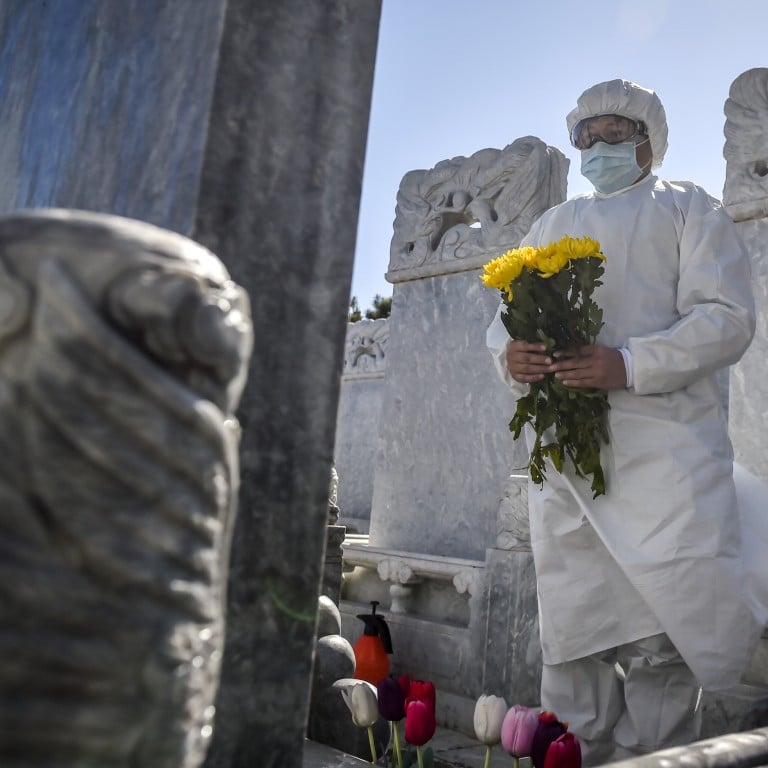
Covid killed nearly 15 million people in two years, WHO excess deaths data shows
- WHO estimate puts coronavirus death toll at 2.75 times higher than the reported 5.4 million in 2020-21
- Toll nearly 10 times higher than official count for India, whereas China data does not offer new insight
Covid-19 directly and indirectly killed 14.9 million people over 2020 and 2021 – nearly three times more than reported deaths in the period – according to the latest World Health Organization data.
The calculation of excess deaths is an important tool to gauge the full impact of the pandemic as many countries lack the mechanism to report the mortality caused by Covid-19 in a timely manner.
The WHO estimate released on Thursday put the coronavirus death toll 2.75 times higher than the reported 5.4 million in 2020-21.

Around 84 per cent of the excess deaths were in Southeast Asia, Europe and the Americas, it said.
The estimate includes deaths from all causes, such as also those from other health conditions when the pandemic restricted access to medical services. The impact of behavioural changes, such as fewer traffic accidents because of social distancing measures and movement restrictions, were also taken into account.
Tuberculosis: Southeast Asia worst hit by global scourge
Excess mortality is calculated as the difference between the number of deaths that occurred and the number of expected deaths in the absence of the pandemic, based on data from earlier years.
Several organisations and academics have tallied the excess death toll since 2020. For example, the Institute for Health Metrics and Evaluation (IHME) at the University of Washington estimated earlier that 18.2 million people had died because of the pandemic.
The WHO, however, is the first to give a breakdown of excess mortality by age and sex. Males accounted for 57 per cent of the excess deaths, while 82 per cent were estimated to be above the age of 60.
Wang Haidong, an associate professor at the IHME, said the breakdown by age group and genders could provide important information.
“It is extremely valuable for the WHO to come to come up with a specific sex-age estimate,” Wang said. “It is very interesting, nobody has done that before.”
The countries that recorded the biggest differences between reported Covid-19 deaths and excess mortality were Brazil, Indonesia, India, the United States, Russia, Peru, Turkey, Egypt, and South Africa.
A report by The New York Times last month claimed that the WHO estimates were delayed for months because of objections from India. Under pressure from New Delhi, the WHO, while asserting it had been transparent in its methodology and consulted member states throughout the process, added a disclaimer that its estimate was not the official Indian government estimate.
“India has reported a Covid [death] number of 481,000 … for that period, and we’re estimating an excess of 4.74 million,” WHO data analyst William Msemburi said.
Since only half of the countries around the world get timely data, WHO has worked with experts to come up with modelling for the estimates, as it called for better death surveillance for better health policies. Other organisations assessing excess deaths have also come up with their own models of calculation.
Commenting on the global data, WHO director general Tedros Adhanom Ghebreyesus said the global health body would call on members to generate better data.

“These sobering data not only point to the impact of the pandemic but also to the need for all countries to invest in more resilient health systems that can sustain essential health services during crises, including stronger health information systems,” he said.
In April 2020, the Chinese government revised the official death toll from 3,869 to more than 4,600, but some overseas academics say the number could be higher.
The WHO estimates that there were over 60,000 excess deaths in China in January 2020, but fewer deaths than expected in the next two months.
Wang, however, cautioned against reading too much into the monthly figures because reporting of death is often delayed and death figures are affected by seasonality. The number was also too small, given China’s vast population of 1.4 billion. China actually reported fewer deaths than previous years in the first three months of 2020.
However, the data reveals more excess deaths among people in China aged 60 to 79 in the two years under review, whereas other age groups recorded fewer deaths than expected.
Excess deaths per 100,000 people in China were estimated at minus 2, meaning total deaths from all causes during the period were around the same as expected.
The data for China, like that for many other countries, was arrived at by estimation.



